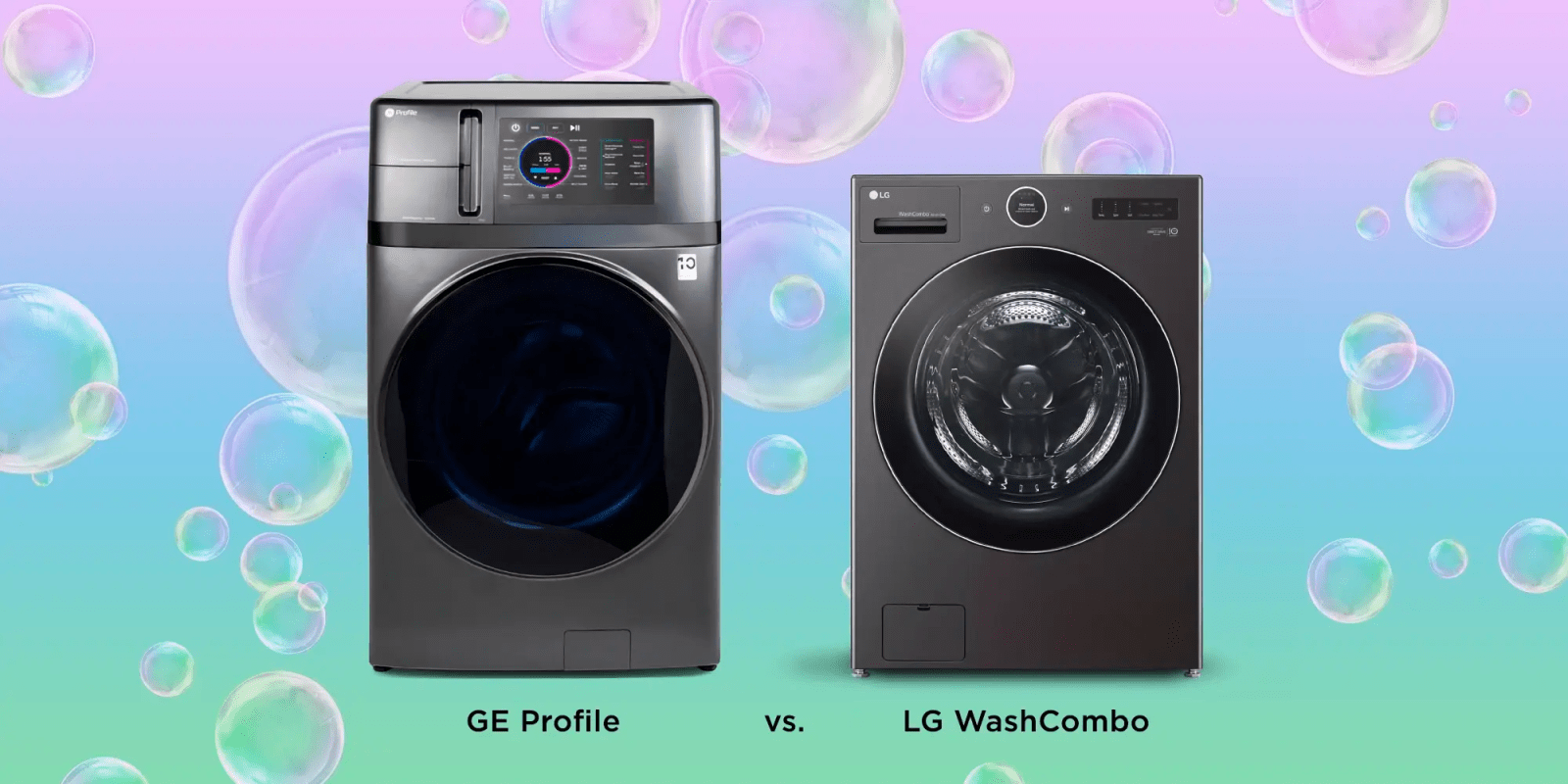
The emergence of new, large washer-dryer combo units like the GE Profile UltraFast PFQ97HSPVDS and the LG WashCombo WM6998HBA in the North American market has sparked interest. These combo units, equipped with heat pump technology, are considered a revolution in the all-in-one washer-dryer category. Key features and advantages of these appliances include:
Here are several reasons why the new large, efficient, and technologically advanced washer-dryer combo units, such as the GE Profile UltraFast PFQ97HSPVDS and the LG WashCombo WM6998HBA, are considered advantageous:
1. Energy Efficiency: Equipped with heat pump technology, these washer-dryer combos are energy-efficient, providing benefits such as quicker cycles and the ability to function as a washer or dryer alone.
2. Saving a 240V Outlet/Space: The units only require a single 120V outlet, eliminating the need for an additional 240V outlet that standalone dryers usually require. This frees up space in the breaker box, potentially avoiding costly upgrades for additional electrical outlets.
3. No Ductwork or Air Pumps: Being self-contained, the combo units don't require ducts or air pumps to move hot, moist air out of the unit. This results in energy savings, less lint cleaning, and potential cost savings in terms of home construction without the need for separate venting spaces.
4. Elimination of Moving Clothes Between Washer and Dryer: The combo units streamline the laundry process by eliminating the need to move clothes from the washer to the dryer. This can be a significant time-saver and a game-changer for users.
5. Ventless Operation for Lower Home Heating/Cooling Costs: The ventless nature of heat pump dryers means they don't pump air out of the home, resulting in lower home heating and cooling costs. This is particularly beneficial in avoiding negative pressure in the home, which can occur when traditional dryers expel air, leading to the infiltration of outside air.
6. Gentler on Clothes: The heat pump drying process is gentler on clothes, extending the lifespan of fabrics and reducing the need for frequent replacements. Additionally, there is less lint to clean.
7. Quieter Running: Heat pump combos are generally quieter than their resistance heat equivalents, making them suitable for operation during the night or in close proximity to bedrooms without causing disturbances.
8. Long-Term Cost Savings: Despite a higher upfront cost, the combo units offer long-term cost savings due to their energy efficiency. Each wash-dry cycle consumes less energy, resulting in lower operating costs compared to traditional dryers.
9. Easier to Take Advantage of Time-of-Use Rates: The all-in-one design of the combo units makes it easier to take advantage of time-of-use rates, allowing users to run the entire cycle during low-rate periods.
10. IRA Federal, State, and Local Rebates: Depending on the location, rebates may be available for heat pump dryer purchases. Federal, state, and local incentives can significantly reduce the upfront cost.
11. Smart Detergent/Fabric Softener Dispenser: The units come with smart dispensers for detergent and fabric softener, allowing for efficient and automated dispensing based on load size. This feature can save time, prevent overuse of laundry products, and contribute to cost savings.
The bonus feature includes smart detergent/fabric softener dispensers and smart apps for additional convenience.
Downsides
While the heat pump washer-dryer combo units come with numerous advantages, there are still some downsides to consider:
1. Dampness and Wrinkling: After a 2-hour cycle, clothes may feel mildly damp, and there could be more wrinkles compared to a traditional dryer. Running an additional "extra dry" cycle can address this, but it takes some getting used to. The clothes typically feel dry when worn.
2. Limited Sterilization: The heat pump, operating at a lower temperature than a resistance dryer, may not have the same ability to sterilize clothing. While this may not be a significant issue in most cases, it's something to consider, especially for those who prioritize high-temperature drying for sanitation purposes.
3. Extended Cycle for Rapid-Fire Laundry: If there's a need to process a large amount of laundry quickly, the 2-hour cycle of the combo unit might take longer than running a separate washer and dryer simultaneously. For households with frequent laundry marathons, a second unit or keeping a traditional washer and dryer as backups could be options.
4. Heavy Weight: These combo units are heavy, with the GE Profile weighing north of 300 lbs. Moving them, especially upstairs, may require multiple people.
5. Absence of the Traditional Warm Clothes Experience: The lukewarm clothes from a heat pump dryer lack the nostalgic experience of jumping into a pile of clothes straight from a traditional warm dryer. The cooling-down period at the end of the cycle, which could be skipped on the GE Profile, eliminates this particular joy but also reduces the risk of burns from metal snaps and zippers.
So which of these is the better pick? I aim to find out over the next few months when I will have both of the in my house at the same time. But for now, let’s look at the differences on paper:
GE Profile vs. LG WashCombo – FIGHT!
Size:

We were unaware of LG's debut into the market last month when we chose to buy the GE Profile. It was delivered a few weeks ago, and the early washes met expectations. The "moistness" at the conclusion of a cycle is accurate, albeit it takes some getting used to.
However, now that we're looking at the LG WashCombo, it appears to better suit our needs.



0 Comments